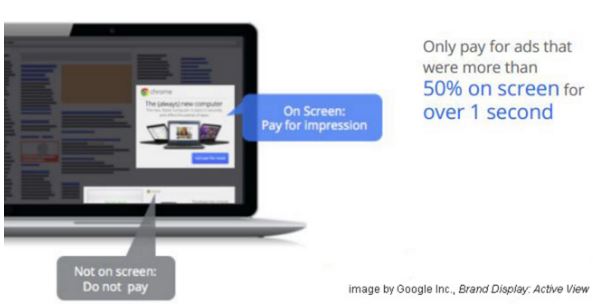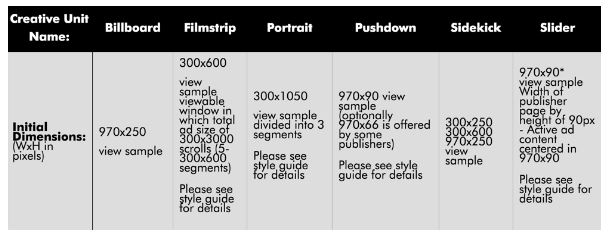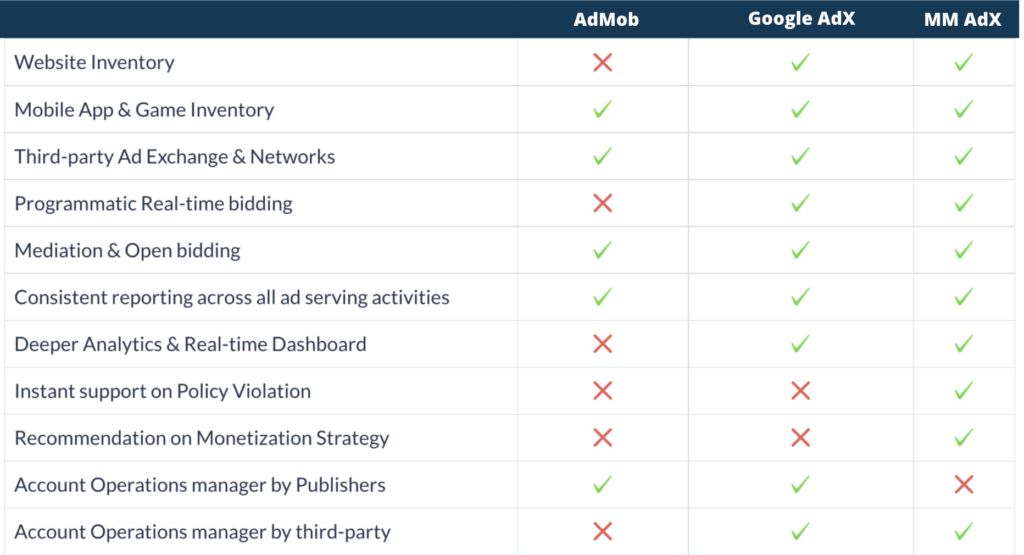Gone are the days when publishers only rely on Google Analytics to target specific audiences to make their ad inventory attractive to advertisers. It has been a continuous improvement throughout the years – from ad tech solutions, audience measurements, and smart metrics to clearly boost ROI for both advertisers and publishers.
On the sell side, the goal is always revenue generation. A great majority are still stuck between myths and facts on how to manage their site’s inventory effectively.
Our goal is to simply help publishers make the most of their traffic by looking at possible ways to improve the current set up they have or perhaps look at other new metrics that can jumpstart their success in site monetization. Part of this goal is to make their ad inventory attractive to buyers – particularly Ad Exchange buyers. It is where the big players roll!
Today, we want to share our 7 Winning Tips to Make your Ad Inventory Attractive to Ad Exchange Buyers. Go through the questions below to help you make your ad inventory more profitable:
1. Are your ads seen?
Revenue has never hit a new high and has somewhat plateaued. Does this sound familiar? Of course, it does! At some point, all publishers have had this dilemma and would sometimes point the blame too – maybe it’s the traffic quality or the content is not too engaging, or maybe the site needs a new look and feel. Before you even go to drastic changes, look at your ad’s viewability. This is most often neglected but plays a very important part in ad optimization:

Moving a 300×250 Sidebar bottom ad below the comments box can help improve numbers as an example. You can also try switching a Tablet 160×600 to a 300×250. These are just a few things you can experiment on.
2. Adopt Dynamic Ad Formats
Incorporate dynamic and responsive ad formats that adapt to various devices and user behaviors. This includes formats like native ads, video ads, and interactive ads that enhance user engagement.
These formats adapt to various devices and user behaviors, ensuring a more personalized and engaging advertising experience. Here are some key examples of dynamic ad formats:

- Dynamic Search Ads (DSAs):
Used in search engine marketing, DSAs automatically generate ad headlines and landing pages based on the content of a website. This format leverages dynamic keyword insertion to match users’ search queries in real-time, ensuring highly relevant ad content.
- Dynamic Display Ads:
These ads automatically tailor their content to individual users based on their preferences, behaviors, and other relevant data. They can include elements such as product recommendations, pricing information, and promotional messages, all adapted in real-time.
- Dynamic Video Ads:
Composed of interchangeable elements such as scenes, product images, overlay text, and calls-to-action (CTAs), making them relevant to the viewer. They are particularly effective on social media platforms.
- Dynamic Podcast Ads:
These ads dynamically insert advertisements into podcast episodes based on user data, interests, and the context of the content. They can include personalized greetings, location-specific offers, and content that aligns with the podcast’s theme.

Credit/s: IAB: http://www.iab.com/guidelines/display-rising-stars-ad-units/
3. Are you Google-compliant?
It’s always good to maintain a good standing account with not just Google but with all other third-party ad network partners. If your health card says multiple and successive issues of violations here and there, that will mostly impact the number of advertisers who’d be interested in buying a large volume of traffic on your site.
There are basically three golden rules to keep it simple:
- Follow the guidelines to the most minute detail.
- Keep yourself updated with the latest changes and updates.
- Watch out for Google notifications in both your AdSense and AdX accounts and resolve them ASAP.
4. Too cheap or too pricey?
The best thing about running Google AdX is that publishers have full inventory control. But with great power comes great responsibility!
Setting too high floors do not guarantee high returns, it would simply mean you are limiting the buyers that can bid on your inventory which can hurt your site’s performance and revenue. Thus, we strongly suggest to understand your traffic sources, and most importantly study your ad units’ performance. Drill down to get the minimum and maximum CPMs. Analyze your reports and find out as much info as you can about your inventory’s performance.
Remember that the goal is to set up realistic floors where your branded buyers pay exactly what your traffic is worth. The second is to open up your inventory for non-branded ones, so you don’t leave money on the table.
You can cluster together ad units per geo, per performance CPMs, or per placements.
5. How to Flex?
This strategy can improve a current ad placement performance and push CPM rates higher, as you are allowing your inventory to accommodate multiple different sizes and creatives. This increases the demand for your ad slot.
There are two ways you can do this:
- Via Ad Inventory Flex Sizing
If you are using an ad server, like Google Ad Manager (GAM) you can customize the ad slot inventory size to accommodate multiple sizes. In the screenshot below, a sidebar 300×600 ad slot can serve multiple different sizes whichever can pay the highest for the impressions within GAM.
Here’s how:
- Create a GAM Ad Unit – e.g., Sidebar_Mid_Flex
- Define the sizes you want to compete within the unit – 300×600, 160×600, 300×250
- Set up your GAM order and line items using the said sizes.
What GAM will do is it will encourage competition among these 3 line items targeting the same ad unit.

- Via AdX Flex % adjustments
If you are using Google AdX, this is something you can easily do.
- In your Google AdX account, go to Rules and choose “Flexible sizes” in the left-hand section options
- Create a Display Rule and name it according to how you want it
- Target the ad tag you used to deliver in the said ad slot – e.g. Sidebar_Mid_Flex_300x600. You can skip adding sizes or geographical locations if you simply just want to enable flexible sizes in the slot.
- Activate “Allow smaller creatives”

- Set the dials to an acceptable percentage of how small creatives can be allowed into your inventory. Please note that if a 300×250 is delivered in a 300×600 slot, white space will envelop the other area. So, choose the default to start and feel free to adjust later.

6. Do you offer value to your users?
The mobile revolution has started, and the majority of internet users’ attention span has dropped tremendously over the years—from what used to be 5 minutes on page to now 1:30 minutes. We have seen sites loaded with one too many photos with one or two sentence descriptions, and that’s basically it. Or sites with tons of ads and very little content.
If you want to attract high-paying advertisers who are seriously interested in buying your traffic, then it’s time to pay close attention to “user experience” and “value.”
Start looking at the things that advertisers are interested in:
- Site’s Global Rank
We have to admit it; sometimes it’s a popularity contest. But you don’t get popular because of anything. You get popular because you offer what users want.
- Google Page Rank
Google ranks sites from 10 to 0 with a major emphasis on quality backlinking. So, get to work on your SEO and link-building strategies.
- Inventory Volume
Most advertisers wanted volume and if you do not have this then they’d consider you at the little bottom of the list but hey, this should only get better if you improve content.
- Time on Page
How engaged are your users? How long do they stay on the pages before they the hit that X button because they have better reading options out there?
- Bounce Rate
It’s a very helpful metric that can help you measure the quality of your traffic. Bounce rate is usually measured by getting the percentage of website visitors who land on a page and then leave. The other way to measure this is when the visitor stays on the site for 5 seconds or less and then exits.
Look at the numbers; they don’t lie.
Read more about Ad Exchange here: https://www.monetizemore.com/solutions/google-ad-exchange-adx/
7. Are you in or out?
In Google AdX, there is an option where a publisher can opt into new technologies. By default, publishers are opted out until they approve the new ones manually. It would be helpful to check this every now and then to update your AdX settings.

AI and Machine Learning Integration
Advanced AI and machine learning are becoming integral to programmatic advertising. These technologies enable real-time campaign optimization, personalized advertising experiences, and enhanced targeting precision.
MonetizeMore’s AI ad optimization solution, PubGuru, leverages machine learning to automatically test various ad layouts. This process involves analyzing multiple configurations to determine which layout yields the highest bid prices and best performance.
PubGuru continuously compares bids in real-time, ensuring that the highest-paying ads are displayed. This eliminates the need for manual updates to ad network priority levels, saving publishers time and effort.
MonetizeMore’s AI can also predict future ad performance based on historical data and real-time trends. This predictive capability helps publishers plan their ad strategies more effectively, ensuring they can anticipate and capitalize on opportunities.
There you have it, folks! Bookmark this article and keep optimizing your website and ad inventory to attract big-time, potential Ad Exchange buyers. If you need expert advice and actual implementation of these tips, sign up as our Premium Publisher to get started.
Related Reads:
- Yield Management & Optimization for Publishers: Ultimate List!
- 10 Successful Publisher Business Models
- Best Ad Servers for Publishers
- 10 Most Common Adsense Violations
source https://www.monetizemore.com/blog/7-winning-tips-make-ad-inventory-attractive-ad-exchange-buyers/




0 Comments